
Robert Wardell (1793 – 7 September 1834) was an English-born Australian barrister and newspaper editor. [1]

Robert Wardell (1793 – 7 September 1834) was an English-born Australian barrister and newspaper editor. [1]
Wardell was born in England and educated at Trinity College, Cambridge, where he matriculated 1810, gained his LL.B. in 1817 and a LL.D. in 1823. [2] [3] Wardell was editor and proprietor of the Statesman, a London evening paper, when in 1819 he met William Wentworth. [1] In 1821, Wardell was one of a number of newspaper editors in London accused of “the publication of seditious libels.” [4]
In 1823, Wardell applied for the new position of attorney-general in New South Wales but was unsuccessful; the position went instead to Saxe Bannister. [1]
In 1824 Wardell sold his Statesman paper and formed a partnership with Wentworth. Printing materials were purchased as part of a plan to found an Australian newspaper, and they sailed for Australia, arriving about September. Soon afterwards they started The Australian, the first number appearing on 14 October 1824 and was to be published weekly at a cost of one shilling. [1] It was the first independent paper to be published in Australia, and Governor Thomas Brisbane who was approaching the end of his term was inclined to welcome it. After the arrival of Governor Ralph Darling in December 1825, friction between the governor and the paper developed. Early in 1827 governor Darling was devising means to control its criticism of his actions; he brought in a newspaper tax of fourpence a copy, but chief justice Francis Forbes refused to sanction the act. In September 1827 Wardell who had referred to the governor in The Australian as "an ignorant and obstinate man" was charged with libel. [5] Wardell conducted his own defence with great ability and the jury failed to agree. Wardell was again on trial for libel in December, and Wentworth who was defending him asserted that the jurors, who were members of the military, might lose their commissions if they did not return a verdict for Darling. The jury again disagreed.
He fought a duel, in late 1826, with the then former Attorney-General, Saxe Bannister. An item in The Australian titled, 'How-e to live by plunder', resulted in a second duel, in 1827, this time with Governor Darling's brother-in-law and private secretary, Lieutenant Colonel Henry Dumaresq; nobody was injured in either duel, [6] [7] [8] [9]
Wardell was now editor and sole proprietor of The Australian and his practice as a barrister was increasing; early in 1831 the government was glad to brief him in an action for damages against it. Towards the end of 1831 Governor Darling was informed by Frederick John Robinson, 1st Viscount Goderich that his six-year term as governor would soon be expiring, [10] and after the arrival of the liberal-minded Governor Richard Bourke, Wardell's writing became much more temperate in tone. In 1834, having made a moderate fortune, he was intending to go to England, but on 7 September 1834 when inspecting his estate on horseback at Petersham, New South Wales he came across three runaway convicts and tried to persuade them to give themselves up. The leader of the men, John Jenkins, [1] however, picked up a gun and fatally shot Wardell. The men were arrested a few days later and two of them were subsequently hanged. Wardell was unmarried. [1]
Wardell Road, which runs south from Petersham, in Sydney, is named after him. [11]
Wardell appears as a character in the radio play Spoiled Darlings and the mini series The Patriots .
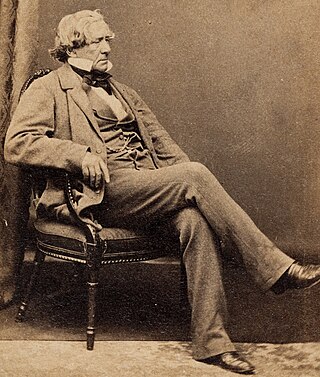
William Charles Wentworth was an Australian statesman, pastoralist, explorer, newspaper editor, lawyer, politician and author, who became one of the wealthiest and most powerful figures in colonial New South Wales. He was among the first colonists to articulate a nascent Australian identity.

Major General Sir Thomas Makdougall Brisbane, 1st Baronet,, was a British Army officer, administrator, and astronomer. Upon the recommendation of the Duke of Wellington, with whom he had served, he was appointed governor of New South Wales from 1821 to 1825.

Charles Napier Sturt was a British officer and explorer of Australia, and part of the European exploration of Australia. He led several expeditions into the interior of the continent, starting from Sydney and later from Adelaide. His expeditions traced several of the westward-flowing rivers, establishing that they all merged into the Murray River, which flows into the Southern Ocean. He was searching to prove his own passionately held belief that an "inland sea" was located at the centre of the continent. He reached the rank of Captain, served in several appointed posts, and on the Legislative Council.

The Darling River is the third-longest river in Australia, measuring 1,472 kilometres (915 mi) from its source in northern New South Wales to its confluence with the Murray River at Wentworth. Including its longest contiguous tributaries it is 2,844 km (1,767 mi) long, making it the longest river system in Australia. The Darling River is the outback's most famous waterway.
D'Arcy Wentworth was an Irish-Australian surgeon and the first paying passenger to arrive in the new colony of New South Wales. He served under the first seven governors of the Colony, and from 1810 to 1821, he was "great assistant" to Governor Lachlan Macquarie. Wentworth led a campaign for the rights and recognition of emancipists and for trial by jury.
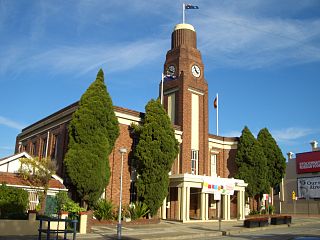
Petersham is a suburb in the Inner West of Sydney, in the state of New South Wales, Australia. Petersham is located 6 kilometres south-west of the Sydney central business district, in the local government area of Inner West Council. Petersham is known for its extensive Portuguese commercial offerings, with many Portuguese businesses and restaurants, although only 156 (1.9%) of the population was actually born in Portugal.
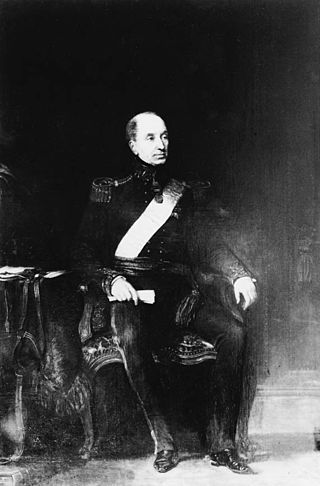
General Sir Ralph Darling, GCH was a British Army officer who served as Governor of New South Wales from 1825 to 1831. He is popularly described as a tyrant, accused of torturing prisoners and banning theatrical entertainment. Local geographical features named after him include the Darling River and Darling Harbour in Sydney.
Saxe Bannister was a writer and the first Attorney-General of New South Wales, Australia.
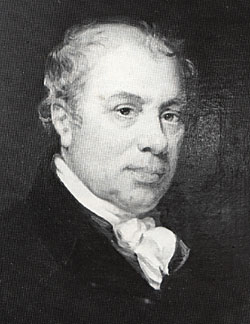
Alexander MacleayMLC FLS FRS was a Scottish-Australian leading member of the Linnean Society, a fellow of the Royal Society and member of the New South Wales Legislative Council.
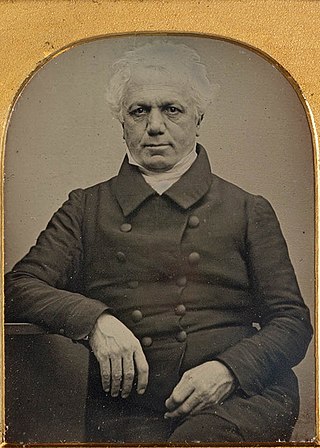
William Bland was a prominent public figure in the colony of New South Wales. A surgeon by profession, he arrived in Australia as a convict but played an important role in the early years of Australian healthcare, education and science.
The following lists events that happened during 1883 in Australia.

All Saints Anglican Church is an Anglican church in the Diocese of Sydney. The church is located at 325 Stanmore Road, Petersham, New South Wales, Australia.
Edward Dumaresq was a landowner, magistrate and acted as Surveyor General of Van Diemen's Land.
John Thomas Campbell (1770–1830) was a public servant and politician in the New South Wales Legislative Council during the early Australian colonial period.

The Australian was an English-language newspaper published in Sydney, Australia.
The Stephen family is a prominent legal dynasty in Australia that has produced a number of judges and jurists. Members include:

William John Dumaresq was an English-born military officer, civil engineer, landholder and early Australian politician. He is associated with settler colonisation of the areas around Scone and Armidale, in New South Wales.

Henry Rowland Gascoigne Dumaresq was an Australian politician who represented the electoral district of Longford in the Tasmanian House of Assembly between 1886 and 1903. He was elected to the Tasmanian House of Assembly on 26 July 1886 and resigned on 12 May 1903.

Eliza, Lady Darling (1798–1868), born Elizabeth Dumaresq, was a British philanthropist and artist. She was the wife of Sir Ralph Darling, Governor of New South Wales from 1825 to 1831.
Lieutenant-Colonel Henry Dumaresq was a military officer of the era of the Napoleonic Wars, colonial government official, and early colonial settler of New South Wales. He was associated with the Upper Hunter Valley and Port Stephens, and was one of the first to take up land around Armidale.
Additional resources listed by the Dictionary of Australian Biography:
Additional resources listed by the Australian Dictionary of Biography :